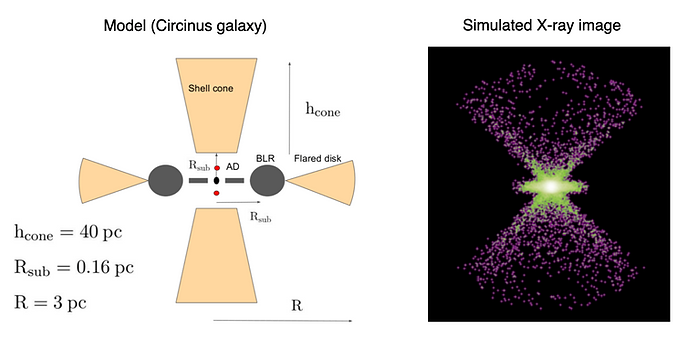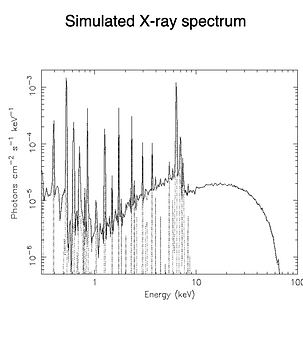
Astrophysicist
Research: AGN demographics and circumnuclear environment
The circumnuclear environment of accreting SMBHs can be studied either by using large AGN surveys, or by high-resolution spectroscopic observations of nearby AGN.
X-ray and multi-wavelength surveys
I am one of the three co-founders of the Swift/BAT AGN Spectroscopical Survey collaboration (www.bass-survey.com), which is based on the least biased sample of local AGN available. As part of this multi-wavelength survey, in the past years we have created the largest existing databases of broad-band (0.3−195 keV) X-ray observations (Ricci et al. 2017d) and optical properties (Koss et al. 2017) of hard X-ray selected AGN. This allowed us to infer fundamental AGN parameters, and to double the number of heavily obscured sources in the local Universe (Ricci et al. 2015). We have currently published ∼20 papers with the BASS survey (two of which in Nature: Ricci et al. 2017c, Koss et al. 2018).

AGN detected by the Swift/BAT survey (Ricci et al. 2017c)
We are currently working on the second data releases, which will be part of a special issue on ApJS in early 2021. BASS provides a fundamental benchmark for studies at higher redshifts, where currently the data quality is typically lower.
Over the past few years I have also been very involved, as a member of the science team, in studies of AGN using the hard X-ray satellite NuSTAR which, with its unprecedented capabilities at > 10 keV, has opened a new window in the Universe, allowing us to unveil some of the most obscured events of accretion. With NuSTAR we were able to show that galaxy mergers are very effective in obscuring accreting supermassive black holes (Ricci et al 2017b). I am also currently leading two projects aimed at studying AGN in luminous and ultra-luminous IR galaxies with the GOALS and CONQUEST collaborations.
Simulations and high-resolution X-ray spectroscopy
The advent of NuSTAR, combined with the unprecedented spectral resolution of the new JAXA/NASA mission XRISM (to be launched in 2022), requires realistic X-ray spectral models to self-consistently account for all absorption and reflection features observed in the X-ray spectra of obscured AGN. To overcome the limitations of current models, in the past years I have been using REFLEX (Paltani & Ricci, 2017), a new ray-tracing platform, to carry out simulations of the environments of AGN considering realistic geometries. REFLEX also considers the production of X-ray photons from inverse Compton processes, so that one can reproduce the X-ray broad-band emission starting from an optical/UV SED. Within my group we have several ongoing projects aimed at: i) using multi-wavelength high spatial resolution observations of the circumnuclear environments of AGN as an input for realistic X-ray spectral models; ii) performing high-resolution simulations to make predictions on features that will be observed by XRISM and Athena, such as low-energy fluorescent lines created by polar dust and the Fe Kalpha Compton shoulder.


Physical X-ray model of the Circinus galaxy based on high-resolution MIR observations, including both dusty (orange) and dust-free (grey) gas (Andonie, Ricci et al. in prep.).